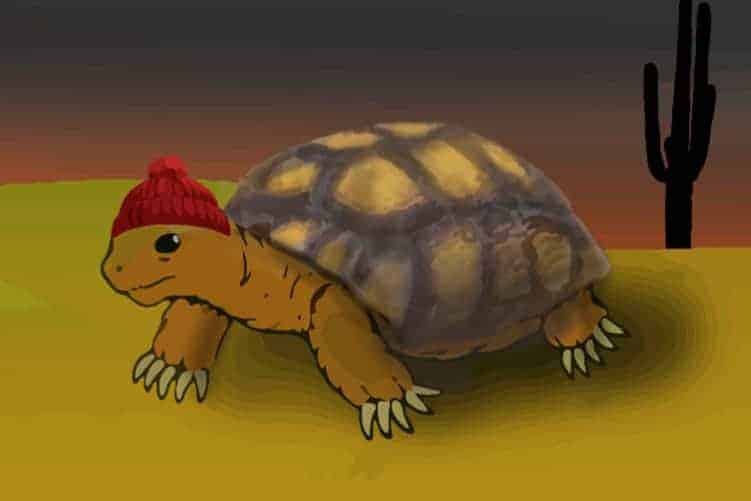
Desert tortoises are a protected species in the United States, and can no longer legally be bought, sold, or taken from the wild. If you’re fortunate enough to have a permit to keep one of these magnificent creatures, you’ll certainly want to be sure you do everything by the book to keep them healthy, including of course, keeping them at the right temperature. Anything less than 50 °F (10 °C) is too cold for a desert tortoise, except during hibernation, when the low temperature will need to be closely monitored and regulated.
Indigenous to North America, Desert Tortoises, as the name suggests live in some of the hottest, most barren areas of the south and south western United States. If you’ve ever ventured to places such as Death Valley in California, you’ll know just how hot these regions can be (140 °F (60 °C) on the ground!), and yet the Desert Tortoise is able to thrive quite happily despite the crippling temperatures.

Conversely we also know that just like their counterparts in Europe; the Spur Thigh and Hermann’s tortoises; desert tortoises can’t function normally at very low temperatures; hence the need to hibernate. But what about day to day throughout the rest of the year?
When your desert tortoise is young you will of course keep a very close eye on his or her temperature, and the heat bulb in your tortoise table or terrarium will do a good job of making sure their heating demands are met.
Note that you don’t need to match the ground temperature of their natural habitat. Just because they exist in places where you could fry eggs on the ground doesn’t mean it needs to be this hot in your tortoise table or garden/yard. Bear in mind they spend 95% of their time in the shade, in burrows, under rocks and in crevices – for good reason!
Yard Dwellers
Like most tortoise breeds Desert Tortoises should under normal circumstances be kept outside when they reach maturity. This ensures they benefit from natural light, fresh air and a large space in which to thrive.
Juveniles on the other hand require more hands on care and are best kept indoors on a tortoise table for the first 2-3 years of their life.
Desert Tortoises at Night
Compared to daytime, night time can be a very different story in terms of temperature especially during winter. Exceptionally low temperatures can be a cause for concern if you haven’t prepared the right living and hibernation conditions.
Like all tortoises adapted for hibernation, Desert tortoises will naturally lower their body temperatures when faced with cold conditions. This puts them into a sort of temporary state of hibernation just as they would in the wild.
As long as temperatures don’t drop below freezing then your tortoise will be okay during the winter months provided they have a dry enclosure to retreat to in your garden. Ground water is a big no no and can resort in problems such as shell rot.
Temperatures below freezing, especially ground temperatures if the tortoise isn’t elevated on some sort of platform, can force the tortoises metabolism into such a slow state that they may at best get sick, or at worst perish.
The advice with desert tortoises in very low temperatures is therefore much the same as for other species: bring them inside when temperatures drop below 50 °F (10 °C) either to put them into hibernation at a regulated temperature that stays within the range of 36-50 °F (2-10 °C), or to ‘Over Winter’ them if they’re not healthy enough to hibernate.
Living Conditions for Desert Tortoises
Typically my go to substrate for my Hermann’s tortoise is compressed straw pellets. These provides a great insulating bedding material that’s easy to apply and clean out.
Desert tortoises on the other hand have a slightly different set of requirements… or maybe preferences would be a better word. In general they prefer a sandy substrate that retains water (so not too crumbly) and allows them to escape the heat during the peak of the midday sun.
Depending on where you live, your captive tortoise won’t have the same issues of escaping heat and retaining water as they would in the wild, however it’s still best to appease their natural instincts be opting for a soil type that suits them. A sterilised topsoil is a good choice, ideally with loam and clay to give a degree of clagginess.

